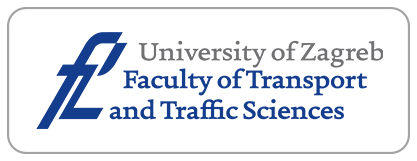Cross-En-Route Aircraft Collision Risk Study Considering the Warning Adjustment Process

Downloads
In this research, a comprehensive cross-route collision risk assessment model was developed with the aim of accurately determining the minimum safety interval for aircraft during cross-route flights. At the beginning of the study, the event tree analysis (ETA) method was adopted to meticulously break down the aircraft’s flight process. Subsequently, a stochastic differential equation was established based on the route structure to precisely describe the aircraft’s position change. The Monte Carlo method was then utilised to calculate the probability of conflicts. When the air traffic control officer’s (ATCO) deployment malfunctions and is likely to trigger an alarm, the fault tree (FT) and dynamic event tree (DET) analysis methods were further employed. These two methods were used to calculate the failure probability of the warning system and the pilot’s operation error probability respectively, thereby obtaining the failure probability during the warning adjustment process. The completed comprehensive assessment model has powerful functions and can efficiently simulate and accurately evaluate collision risks under different initial conditions.
Downloads
Boeing. Statistical summary of commercial jet airplane accidents worldwide operations 1959-2020. United States: Boeing, 2021.
Reich PG. Analysis of long-range air traffic systems: Separation standards Ⅰ. Journal of Navigation. 1966;19(1):88-98. DOI: 10.1017/S037346330004056X.
Reich PG. Analysis of long-range air traffic systems: Separation standards Ⅱ. Journal of Navigation. 1966;19(2):169-186. DOI: 10.1017/S0373463300047196.
Reich PG. Analysis of long-range air traffic systems: Separation standards Ⅲ. Journal of Navigation. 1966;19(3):331-347. DOI:10.1017/S0373463300047445.
Brooker P. Lateral collision risk in air traffic track systems: a ‘post-reich’ event model. Journal of Navigation. 2003;56(3):399-409. DOI: 10.1017/S0373463303002455.
Bakker GJ, Blom HAP. Air traffic collision risk modelling. Proceedings of 32nd IEEE Conference on Decision and Control.San Antonio,TX,USA:IEEE.1993;1464-1469. DOI: 10.1109/CDC.1993.325430.
Blom HAP, et al. Collision risk modeling of air traffic. 2003. European Control Conference (ECC). Cambridge,UK:IEEE. 2003;2236-41. DOI: 10.23919/ECC.2003.7085299.
Wang C, Li YK, Li HY. Collision risk analysis of parallel runway approach based on Monte Carlo. Journal of Safety and Environment. 2023;23(03):659-66. DOI:10.13637/j.issn.1009-6094.2021.1741.
Figuet B, et al. Data-driven mid-air collision risk modelling using extreme-value theory. Aerospace Science and Technology. 2023;142:108646. Doi: 10.1016/j.ast.2023.108646.
Zhang ZN, Shen JW, Liu JM. Lateral collision risk model based on CNS position error. Journal of Traffic and Transportation Engineering. 2009;9(06):110-3. DOI:1 0.19818/j.cnki.1671-1637.2009.06.021.
Zhang ZN, Liu JM, Wang LL. Assessment of longitudinal collision risk on parallel routes based on communication, navigation, and surveillance performances. Journal of Southwest Jiaotong University. 2009;44(06):918-925. DOI: 10.3969/j.cnki.issn10258-2724.2009.06.021
Lu F, et al. Assessment of lateral collision risk in closed spaced parallel runways paired approach. China Safety Science Journal. 2016;26(11):87-92. DOI: 10.16265/j.cnki.issn1003-3033.2016.11.016.
Lu F, Chen HN. Longitudinal collision risk of CSPRs paired approach under funny PID control. China Safety Science Journal. 2023;33(11):97-104. DOI: 10.16265/j.cnki.issn1003-3033.2023.11.0895.
Huang BJ. Lateral collision risk model on parallel routes based on communication, navigation and surveillance performances. Journal of Southwest Jiaotong University. 2012;47(06):1075-1080+1091. DOI: 10.3969/j.issn.0258-2724.2012.06.026.
Zhang Y, Shortle J, Sherry L. Methodology for collision risk assessment of an airspace flow corridor concept. Reliability Engineering & System Safety. 2015;142:444-455. DOI: 10.1016/j.ress.2015.05.015.
Cao XW, Zhang ZN. Cross route collision risk assessment based on improved Event model. Journal of Civil Aviation University of China. 2015;33(03):1-4.
Zhang L. Collision risk of crossing airlines at the same altitude based on REICH model. Journal of Shenzhen University Science & Engineering. 2020;37(2). DOI: 10.3724 /SP.J.1249.2020.02136.
Meng X, Zhang P, Wang Y. Aircraft collision risk assessment at intersecting air routes. Journal of Beihang University of Aeronautics and Astronautics. 2010;36(9):1021-5. DOI: 10.13700/j.bh.1001-5965.2010.09.004.
Songchen H, Yuling Q, Fanrong S, Xinping Z. Collision risk model around intersection of airways. Journal of Southwest Jiaotong University. 2013;26(2):383-9. DOI: 10.3969/j.issn.0258-2724.2013.02.029.
Novak A, Havel K, Adamko P. Number of conflicts at the route intersection–minimum distance model. Aviation. 2019;23(1):1-6. DOI: 10.3846/aviation.2019.9746.
Wang LL, Liu XY.Research on cross-flight flow pre-conflict resolution based on auto-rerouting. Journal of Southwest Jiaotong University. 2024;1-9.
Federal Aviation Administration. Introduction to TCAS II Version 7.1. United States. Federal Aviation Admianistration, 2011.
Sun RS, Chen YF. Application of CREAM predictive method in conflict resolution by air traffic controllers. In Proceedings of 2010 (Shenyang) International Colloquium on Safety Science and Technology 2010.
EUROCONTROL,THE EUR RVSM safety monitoring report. Brussels: EUROCONTROL, 2004.
Shortle J, Sherry L, Yousefi A, Xie R. Safety and sensitivity analysis of the advanced airspace concept for NextGen. In2012 Integrated Communications, Navigation and Surveillance Conference 2012 Apr 24 (pp. O2-1). IEEE. DOI: 10.1109/ICNSurv.2012.6218434.
Sun R, et al. A method of analysis integrating HCR and ETA modeling for determining risks associated with inadequate flight separation events. Journal of Aviation Technology and Engineering. 2011;1(1):5. DOI: 10.5703/1288284314632.
Brooker P. STCA, TCAS, airproxes and collision risk. The Journal of Navigation. 2005;58(3):389-404. DOI: 10.1017/S0373463305003334.
Copyright (c) 2025 Fei LU

This work is licensed under a Creative Commons Attribution-NonCommercial 4.0 International License.




















